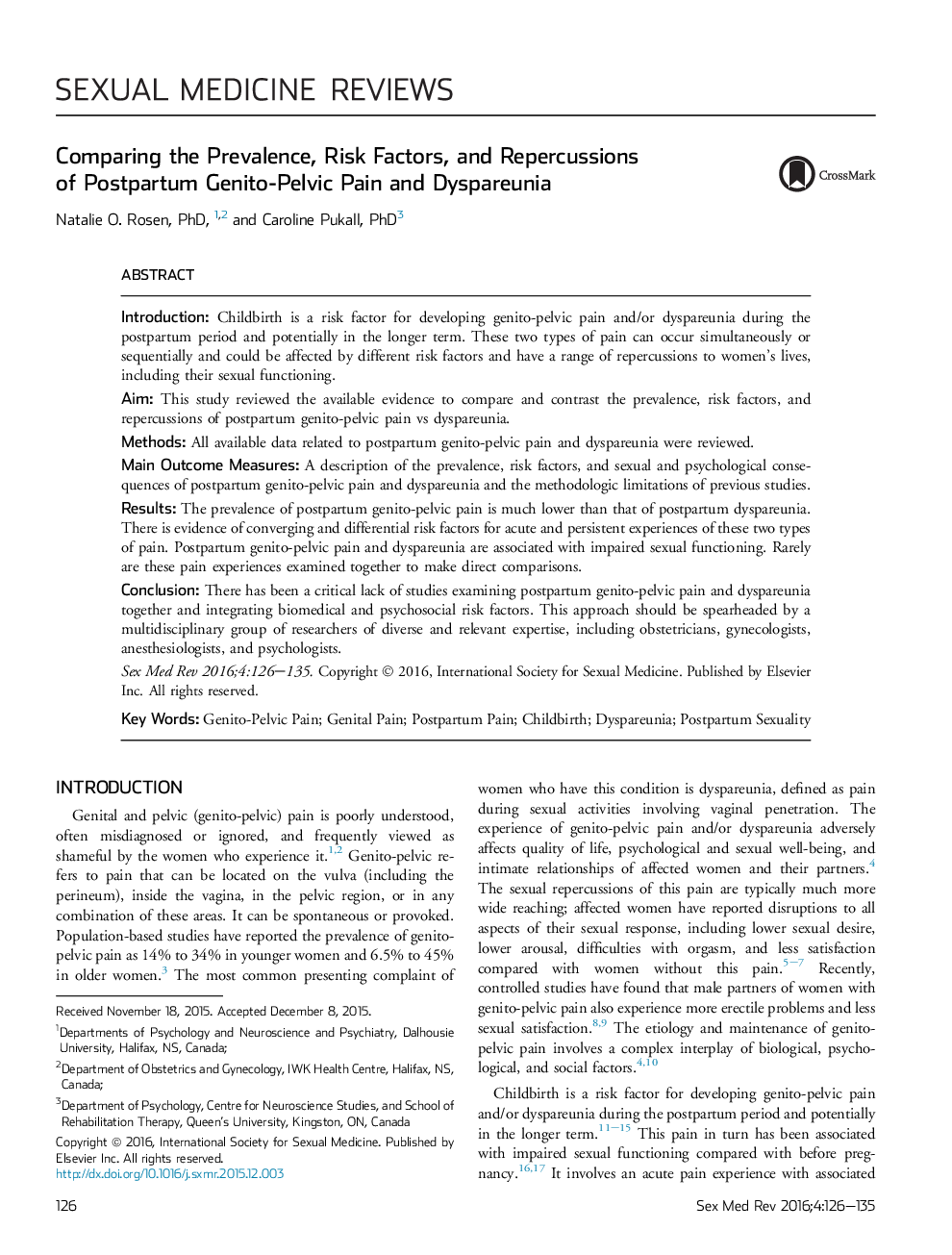| Article ID | Journal | Published Year | Pages | File Type |
|---|---|---|---|---|
| 4274725 | Sexual Medicine Reviews | 2016 | 10 Pages |
IntroductionChildbirth is a risk factor for developing genito-pelvic pain and/or dyspareunia during the postpartum period and potentially in the longer term. These two types of pain can occur simultaneously or sequentially and could be affected by different risk factors and have a range of repercussions to women's lives, including their sexual functioning.AimThis study reviewed the available evidence to compare and contrast the prevalence, risk factors, and repercussions of postpartum genito-pelvic pain vs dyspareunia.MethodsAll available data related to postpartum genito-pelvic pain and dyspareunia were reviewed.Main Outcome MeasuresA description of the prevalence, risk factors, and sexual and psychological consequences of postpartum genito-pelvic pain and dyspareunia and the methodologic limitations of previous studies.ResultsThe prevalence of postpartum genito-pelvic pain is much lower than that of postpartum dyspareunia. There is evidence of converging and differential risk factors for acute and persistent experiences of these two types of pain. Postpartum genito-pelvic pain and dyspareunia are associated with impaired sexual functioning. Rarely are these pain experiences examined together to make direct comparisons.ConclusionThere has been a critical lack of studies examining postpartum genito-pelvic pain and dyspareunia together and integrating biomedical and psychosocial risk factors. This approach should be spearheaded by a multidisciplinary group of researchers of diverse and relevant expertise, including obstetricians, gynecologists, anesthesiologists, and psychologists.
